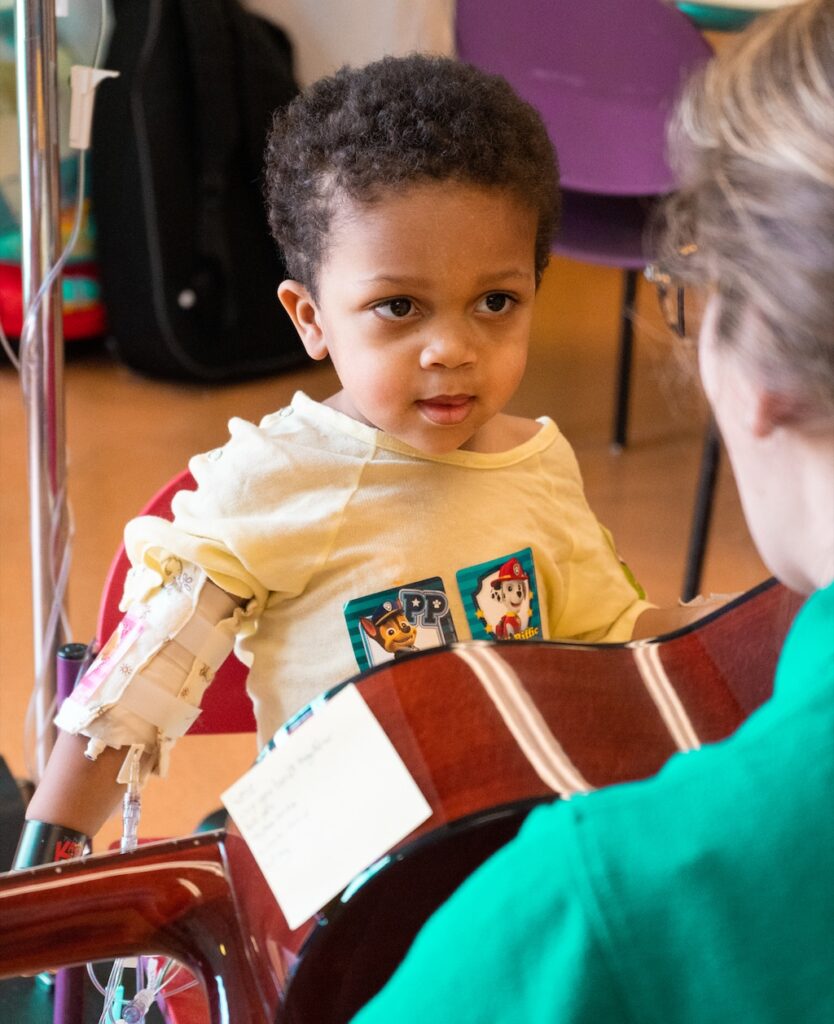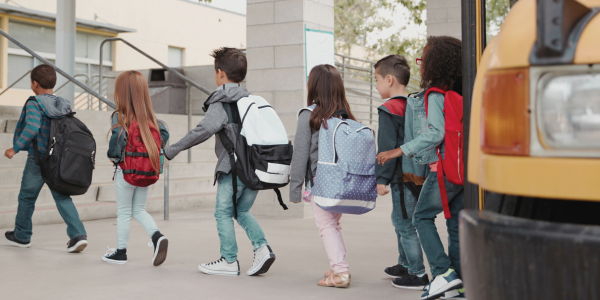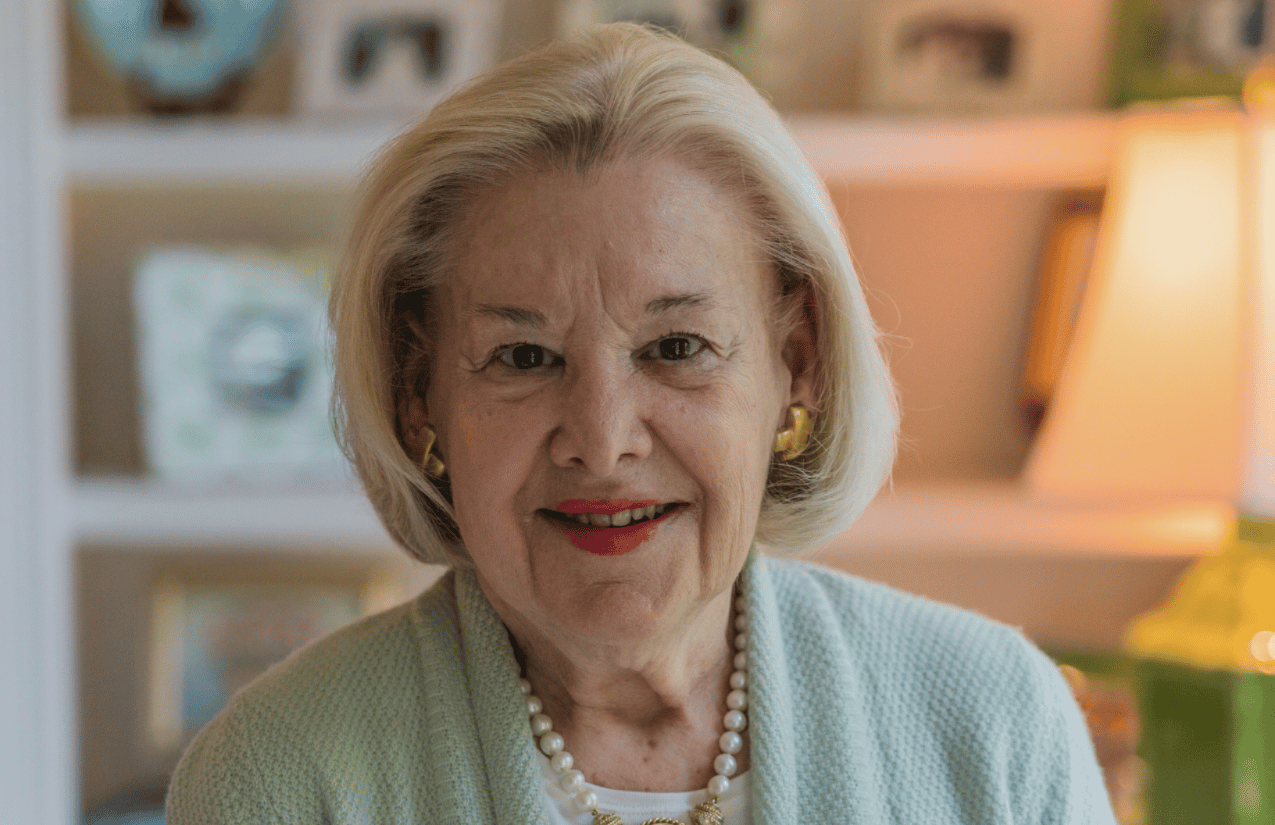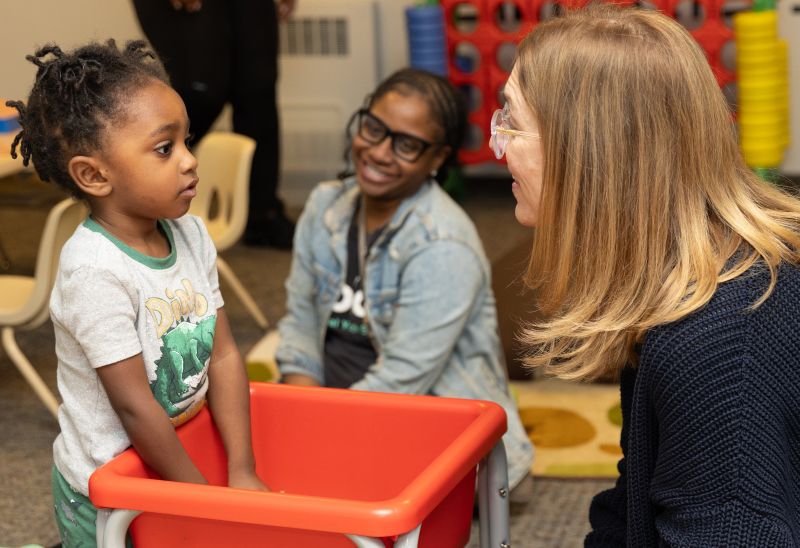
Music has the power to make us laugh and cry, feel relaxed or motivated, cope and heal. Music is therapy. And for children like Samuel*, it has made all the difference.
While waiting a new heart in 2021, 14-month-old Samuel endured a long inpatient stay at Children’s Hospital of Michigan. As a toddler, he should have been taking his first steps, jumping, and busting with energy, but instead he was confined to four walls. Fortunately, Samuel found comfort in music therapy sessions provided at CHM. With his music therapist, he played the guitar and other instruments which provided sensory stimulation and helped him grow in developmental play so he could meet his milestones.
Samuel, along with more than 900 patients and their family members at CHM, received music therapy services enabled by $70,000 in grant support from The Children’s Foundation. This grant provided funding for the salaries of two board-certified music therapists from the Michigan State University Community Music School-Detroit. As a result, more than 1,100 hours of music therapy were provided, often including individualized plans to best fit the needs of each child.
This is in addition to the innovative ways music therapy engaged children as many group activities at the hospital came to a halt due to COVID-19. Through the hospital’s closed circuit television programming, live broadcast music therapy was implemented. This included a how-to instrument series, genre features, music for relaxation, musical games for the family, goal setting, and other music-related programming.
“The benefits of clinical music therapy manifest positive effects in pain management, relaxation, emotional expression, normalization, socialization and distraction for patients and families” said Kris Johnson, Director of MSU Community Music School-Detroit.
From distracting a child during a painful burn and scald treatment, to relaxing infants before a procedure, or simply normalizing the hospital environment, music therapy is a versatile approach to help many patients at CHM. These activities help improve patient outcomes, make the hospital a more comfortable place to be, and allow kids to be kids, even while receiving treatment.
*Name has been changed to protect privacy




